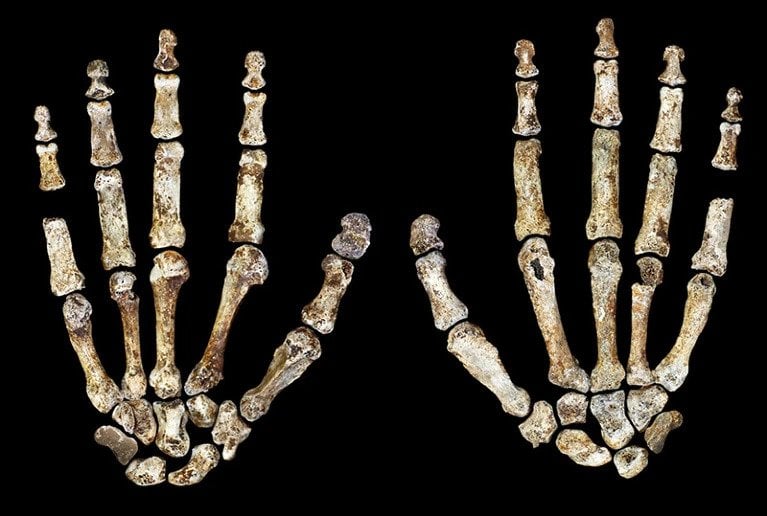
On a Friday morning last week, a Virgin Galactic spaceship traveled 88 kilometers above Earth, right to the edge of space. On that spacecraft, there were two experienced Virgin Galactic pilots, a teacher, and three passengers.
But what made this flight unique was the presence of the remains of two ancient human-like relatives that once lived hundreds of thousands of years ago in southern Africa.
Everyone on board the VSS Unity, including these ancient remains, safely returned to Earth just an hour after liftoff. However, this incredible journey has sparked a strong and critical response from archaeologists and other experts.
They argue that this mission, intended mainly for publicity, was ethically questionable. They are concerned that it put these invaluable ancient human fossils at risk, and it has also raised important questions about how we safeguard our cultural heritage in South Africa.
It’s noteworthy that a government agency had approved this mission despite these concerns, wrote Nature.
In a controversial move, ancient hominin fossils, including those of Australopithecus sediba and Homo naledi, were sent on a Virgin Galactic spacecraft to the edge of space. The decision has sparked outrage among archaeologists and researchers who consider it an unethical… pic.twitter.com/8q6iHqfDna
— LifeSwoop (@LifeSwoop) September 13, 2023
Robyn Pickering, a geologist from the University of Cape Town in South Africa, strongly criticized the handling of ancestral remains in such a thoughtless and unethical manner. She emphasized that there is no scientific justification for sending these remains into space.
First ancient human remains sent to space
While dinosaur bones and other fossils have ventured into space on several missions since the 1980s, these are the very first ancient human-like remains to depart our planet.
Specifically, they belong to two distinct species: Australopithecus sediba, which inhabited Earth roughly two million years ago, and Homo naledi, a species dating back approximately 250,000 years ago.
These significant finds were unearthed near Johannesburg in South Africa under the leadership of palaeoanthropologist Lee Berger, who is currently associated with the National Geographic Society in Washington, DC.
In July, the South African Heritage Resources Agency (SAHRA), based in Cape Town, issued an export permit to Lee Berger. This permit allowed him to move an Australopithecus sediba shoulder bone and a Homo naledi finger bone to New Mexico, where Virgin Galactic’s spaceport is situated.
Subsequently, these fossils were taken aboard the company’s spacecraft during the flight. Tim Nash, a South African businessman who was one of the passengers on the spacecraft, was responsible for carrying these precious fossils during the journey, according to Nature.
European Society for Human Evolution questioned the mission
On September 13th, the board of the European Society for the Study of Human Evolution expressed their concerns about the mission.
[2/3]The recent launch of Australopithecus sediba and Homo naledi bones, including part of a type specimen, into sub-orbit on a Virgin Galactic spacecraft poses significant risks to their preservation and historical value. pic.twitter.com/37Wn8NGt57
— ESHE (@ESHE_society) September 13, 2023
They released a statement in which they raised doubts about the scientific value of this project and raised ethical questions regarding the potential harm to these unique materials.
Their statement emphasized the importance of responsibly safeguarding and protecting these invaluable scientific resources.
See all the latest news from Greece and the world at Greekreporter.com. Contact our newsroom to report an update or send your story, photos and videos. Follow GR on Google News and subscribe here to our daily email!



